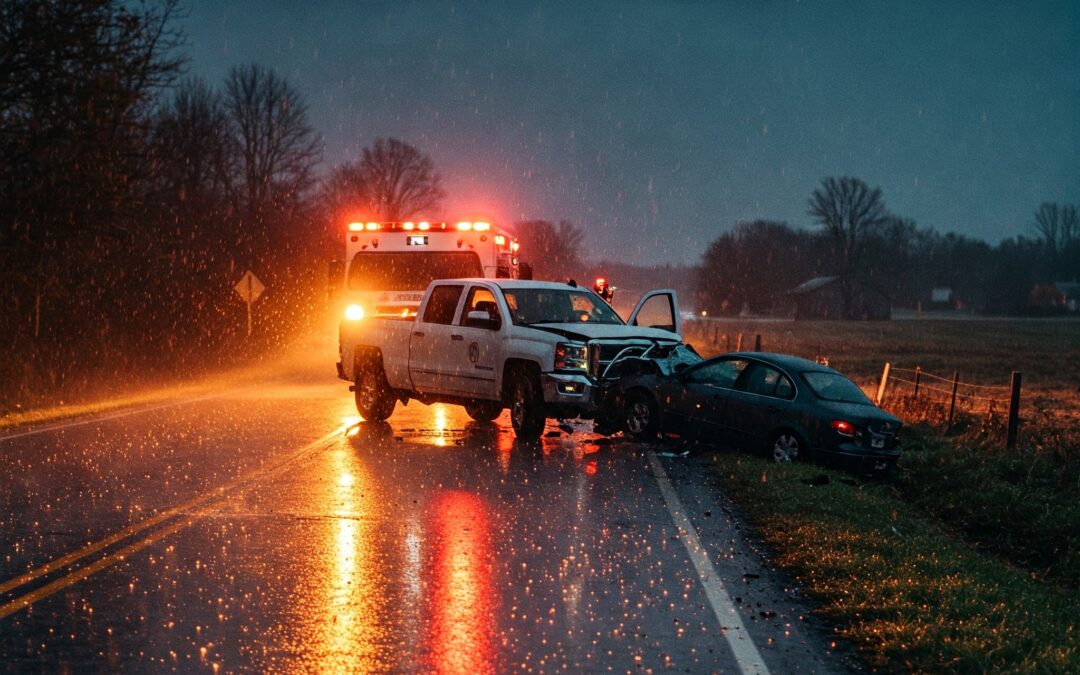When Weather Becomes a Key Witness
In wrongful death cases, the most minor details matter—and sometimes, the weather is the detail that changes everything.
Weather can be a silent but decisive factor in accidents, involving fatal crashes in fog, slips on untreated ice, or drownings caused by flash flooding.
That’s where a forensic meteorologist steps in. Our role is to reconstruct the weather at the exact time and place of an incident using scientifically verified data. We provide the missing context that helps courts, juries, and attorneys understand how weather contributed—or didn’t—to a tragic event.
Why Weather Evidence Is Often Overlooked
Most legal teams know to consult accident reconstructionists or medical experts. But the weather? It’s often an afterthought—until a claim falls apart under cross-examination.
Weather is complex, hyper-local, and time-sensitive. It changes mile by mile, minute by minute. Relying on TV archives or weather apps won’t hold up in court. As certified forensic meteorologists, we bring validated, expert-reviewed data and translate it into clear, courtroom-ready testimony.
Three Wrongful Death Cases Where Weather Was Key
Here are common case types where forensic meteorology can change the outcome:
1. Vehicle Accidents Involving Fog, Ice, or Rain
Case Example: A pre-dawn crash was blamed on driver error. Analysis showed dense fog reduced visibility to under 100 feet, leading to sudden braking and collision.
Outcome: Liability shifted after our reconstruction, which proved that weather conditions played a significant role.
2. Slip and Fall on Ice
Case Example: A person slips outside a business. The defense claimed the walkway had been treated. Our surface and radar data showed refreezing occurred after the last maintenance log.
Outcome: Helped prove that conditions had changed and the area was unsafe during the fall.
3. Drowning or Flood Fatalities
Case Example: A driver drowns after being swept away during a flash flood. The analysis involves rainfall rates, road conditions, and historical alerts.
Outcome: Proved the area was a known flood risk and that weather conditions warranted earlier road closures.
How a Forensic Meteorologist Strengthens Your Case
Hiring a forensic meteorologist gives your legal team:
- Incident-specific weather reconstruction using official data
- Clear, visual reports that are court-admissible
- Expert courtroom testimony in plain English
- Objective, third-party verification of claims
- Rapid turnaround to support tight deadlines
We do more than explain the weather—we show how it affected the people involved in the case, based on facts, not assumptions.
Credentials That Withstand Cross-Examination
When choosing an expert, make sure they bring:
- Certification by the American Meteorological Society (AMS) or the National Weather Association (NWA)
- Courtroom experience in wrongful death and personal injury litigation
- A record of unbiased, science-based reporting
- Understanding of both meteorology and environmental compliance
As one of the only triple-certified forensic meteorologists in the country, I help legal teams build stronger, clearer, and more defensible cases.
Let’s Talk Before Weather Becomes a Wildcard
If you’re working on a wrongful death case and weather may be a factor, the earlier we get involved, the better. I offer quick consultations to assess whether forensic weather analysis could support your claim.
Use the contact form below or email me for a free case review.
Contact – Scroll Down – John Bryant
901.283.3099
Want to know more about forensic meteorology? I have listed some great resources below.
- National Oceanic and Atmospheric Administration (NOAA)
- National Weather Service
- National Centers for Environmental Information
- American Meteorological Society
- AMS Professional Development
- National Weather Association
- SEAK Experts – Forensic Meteorology
- Penn State Department of Meteorology and Atmospheric Science
- University of Oklahoma School of Meteorology
- Colorado State University Atmospheric Science
- University of Washington Atmospheric Sciences
- MIT Earth, Atmospheric and Planetary Sciences
The author of this article is not an attorney. The article is meant to be a resource for meteorology. Contacting a qualified lawyer for legal matters is recommended if you need legal advice.

